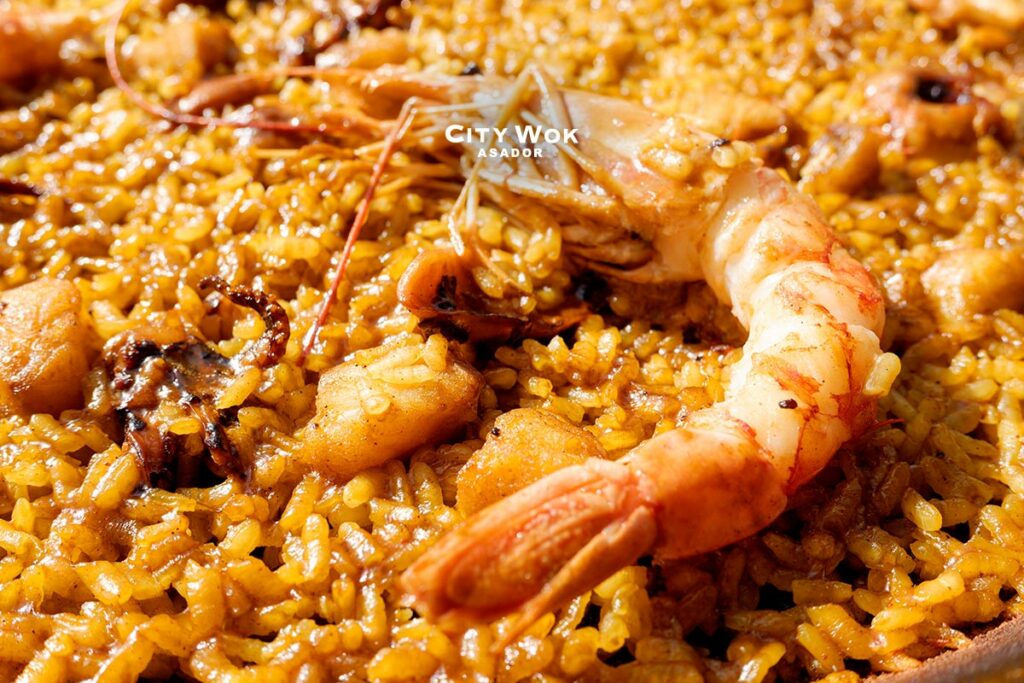Descubre los principales tipos de paella española

Actualmente, la gastronomía de nuestro país constituye uno de los principales motivos por el que miles de turistas viajan a España cada año. Mundialmente reconocida por su amplia variedad de platos, uno de los más reconocidos es la paella, proveniente de la Comunidad Valenciana.
La paella es uno de los platos habituales -y preferidos- de los comensales, especialmente de aquellos que llegan a Valencia. Ninguno de ellos puede marcharse sin antes haber probado una auténtica paella. Además de ser uno de los platos más amados por los españoles y los turistas, se ha convertido en toda una experiencia de un atractivo increíble para todo aquel que viaja a España. Es por ello que todo restaurante que se precie la incluye en su menú.
Tipos de paella en España
Con el paso del tiempo, la receta tradicional de la paella se ha alterado, dando lugar a nuevas variantes de este plato, las cuales son una delicia digna de mencionar. A modo de homenaje, haremos una recopilación de las variantes más populares:
La Paella Valenciana
Es un plato cuyas raíces están en el campo. Es por ello que se elabora con tomate, conejo o pollo, judía verde, garrofón y azafrán. Según la región, hay algunas en las que se le añade alcachofa, ajo e incluso, caracoles.
Paella de Marisco
Aunque es una de las preferidas por los turistas -además de la paella valenciana– lo cierto es que la paella tradicional no incluye pescado, esa es la razón por la que esta variante recibe otro nombre. Habitualmente, estas contienen calamares, mejillones, gambas, almejas o cigalas. Aunque también hay algunos que apuestan por añadirle sepia. Diferenciándose de la paella de marisco, también existe la paella de bogavante, la cual tan solo incluye este tipo de pescado. Es una opción que tiene un coste más elevado debido al precio de este suculento pescado en España.
Paella de carne
Aunque la paella tradicional valenciana, esta variante se centra principalmente en el uso de este ingrediente. Es una de las opciones habituales para los valencianos los domingos. El secreto para darle mayor sabor a la carne está en añadir una buena cantidad de pimentón dulce y pimienta negra.
Paella mixta
Este tipo de paella combina el sofrito de la carne con el uso de calamares, gambas y mejillones. Es el arroz español más internacional, que gusta tanto por el contraste de sabores. Es una variante amada y odiada a partes iguales
Paella Senyoret o Arroz a banda
Es una variante que comparte los mismos ingredientes que la paella de marisco. La diferencia está en que el marisco ya está pelado, desmenuzado y listo para comer. Recibe el nombre de “senyoret” (señorito) debido a que está elaborada de esa manera para que los comensales no se ensucien las manos. Cabe destacar que no todo el mundo considera que se trate de un tipo de paella, aunque es cierto que comparte muchos ingredientes con ella.
Paella de Verduras
Esta variante no incluye carne, tan solo verduras, convirtiéndose en su ingrediente estrella. De este modo, se consagra como una opción ideal para veganos y vegetarianos, además de aquellas personas que están a dieta o prefieren no abusar del consumo de carne.
Paella de arroz negro
Originaria de los pueblos de pescadores ubicados en el Levante y Cataluña. En su preparación hacen uso de los calamares y aprovechan su tinta para conseguir el color negro del arroz.
Paella al horno
Se considera una nueva variación ya que su proceso de cocinado es diferente al de la paella tradicional, ya que el remate final se le da con la cocción al horno, lo que modifica su textura y sabor, volviéndola más seca que la fórmula tradicional.
Si después de leer la amplia variedad de paellas que existen te han entrado ganas de comer una buena paella, en Asador City Wok Alfafar, además de encontrar una amplia variedad de platos de cocina Argentina, cocina China y japonesa, también puedes encontrar una gran cantidad de platos de cocina mediterránea y hacer las combinaciones que desees sin límites.
¿Dónde puedes encontrarnos?
Encuéntranos en Calle Pérez Llàcer nº4 en Alfafar, cerca del Centro Comercial MN4. Recuerda que puedes hacer tu reserva llamando al teléfono 960099969 o haciendo una reserva en nuestra página web.
Además, puedes hacer tu pedido y recogerlo en nuestro establecimiento para disfrutar de tus platos preferidos en la comodidad del hogar. En Asador City Wok Alfafar queremos brindar todas las posibilidades para que el cliente deguste nuestra comida desde cualquier lugar que elija.
Ven a Asador City Wok Alfafar y prueba nuestra comida en unas instalaciones cómodas e ideales para pasar un buen rato acompañado de familia y amigos.